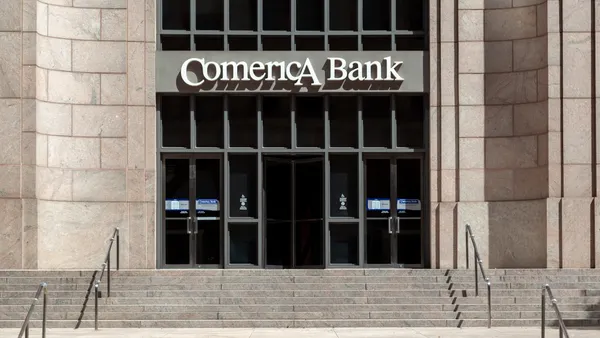Fifth Third has selected a location for, and in some cases already built and opened, 80% of the 200 branches it said it would open by 2028, said Shawn Niehaus, the lender’s head of consumer banking.
This month, the bank is set to enter its 12th state, Alabama, to capitalize on the South’s ongoing boom: It was the only region that saw population growth through domestic migration in 2024, according to Census data, which found that Alabama in particular attracted over 26,000 new residents from elsewhere in the U.S.
It’s a trend Fifth Third’s been watching, heavily focusing its expansion on the southeast.
“The growth that we are having as a company – the ability to be in new communities, to serve customers that were from the Midwest or the north and have moved to the south, and were waiting for branches – it's exciting,” said Niehaus, who is based at Fifth Third’s Cincinnati headquarters. “It's always fun, when I walk into a branch, to have someone say, ‘I banked with you and in Cincinnati or Michigan, and I'm so glad you came here.’
“That's been exciting to see how transient customers are and how excited they are that we are coming just as much as we're excited to be here,” he said.
Fifth Third last entered a new state in 2020, when it opened its first South Carolina branch in the growing city of Greenville. Thirteen branches have since followed, with Charleston and Columbia metro regions gaining steam this year.
Its first Alabama location, in Huntsville, is slated to open Aug. 12. Birmingham will soon follow.
‘Next-gen’ growth
Its new branches, dubbed its “next-gen” financial centers, are smaller, more tech-forward (even in how they’re located) and more casual in feel than legacy branches. The way they’re laid out is one way Fifth Third shows up differently for its customers, Niehaus said.
“Most of the time I never see anyone using the office,” Niehaus said of the next-gen branches’ sole closed-door setting. Instead, he said, customers and employees are using open-air spaces – there’s a booth, a “tech table” with a television, a transaction bar – often working side by side.
“It’s about showing up how customers want us to show up, not building barriers between [them and] you, shutting a door and making you feel like you're locked in to have someone pitch you something. That is not who we want to be,” Niehaus said. “We're all about relationship banking, serving you how you want to be served.”
Fifth Third also “shows up differently” with other services it offers customers, Niehaus said, like the identity protection product it offers through SmartShield, or the free wills and discounted trusts it began offering its members in May through a partnership with estate planning fintech Trust & Will.
“We have a responsibility to help customers not just thrive and grow and build for their retirement or whatever their goals and dreams are, but also protect that,” he said.
More ‘consultative’ than ever
Banking is different from when Niehaus became a part-time teller at Fifth Third in the late 1990s. Back then, he said, it was all deposits and withdrawals – direct deposit wasn’t yet commonplace – and a bank might have $1 million on hand.
“Today, it's more, ‘How are we being consultative and helping our clients, giving them advice and getting them through, whether it's tough times with fraud or disputes,’ or, ‘What should I do? I bought a home equity line, or I bought a car, and I feel like I got a high rate. Help me.’”
But despite times changing, Niehaus is still guided in part by his time as a teller.
“The thing for me is, I know when I walk into a branch, just by the way it feels, the openness of the employees, how they're building relationships, how they're greeting customers. I can tell what the experience is like just because I did it,” he said.
“But for me, being a teller and working all the positions in the branches, I think makes me relatable to all the employees,” he said. “It allows me to say [I worked] in the same realm with them, and they're willing to take the coaching and willing to take the help, because they know I've done it alongside them. When I say to put the customer first, they know that I've done that as well.”











